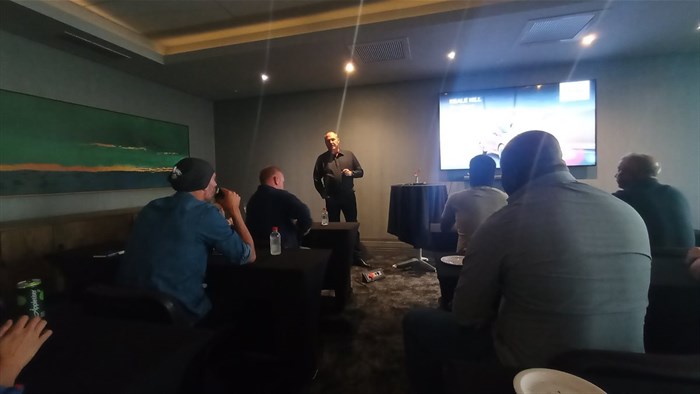
Related
Top stories




LegalTsotsi star’s house, bought with lottery funds, frozen by Special Tribunal
Raymond Joseph 18 hours


More news



The Puma, which was introduced to the European market three years ago, is manufactured in Romania, is a replacement for the discontinued Fiesta, not the EcoSport.
Ford Motor Company Southern Africa’s president Neale Hill reiterated this to local media at the Puma’s recent launch, saying that the Puma was never intended to be an EcoSport replacement in South Africa.

The launch of the Puma comes less than a month after Ford South Africa's 100-year celebration, where it made several significant announcements.
The Puma comes in two derivatives: the Titanium and the ST-Line Vignale. The latter, the higher-specced model, is a compact crossover SUV built on Ford’s B-car architecture. It competes locally with the Volkswagen Taigo, Volkswagen T-Roc, Hyundai Kona, and the Mazda CX-30.
Its introduction to South Africa is a move to strengthen Ford’s passenger vehicle segment in the market, where there is now an absence of familiar names such as the Figo, Fiesta, and EcoSport.
The Puma is the car maker’s attempt to not become recognised solely as a bakkie brand. "It's crucial we get back into the segment," Hill told the local media.
Because the Puma replaces the Blue Oval’s Fiesta, the twos dimensions are nearly identical, except for the Puma being slightly wider, higher and longer by 167mm in length, 22mm in width, and 61mm in height. The ground clearance difference is 33mm.
Cosmetically, however, the two are very different. The Puma has a sloping roofline and headlamps that Ford describes as canoe-shaped. On the side, its wheel arches are more pronounced than that of the Fiesta's.
The ST-Line Vignale has 18" 10-spoke alloy wheels and the Titanium has 17" 10-spoke alloy wheels.
From a design perspective, the Puma is stylish and more modern-looking than its predecessor.


I drove the ST-Vignale model at launch, which had a solid interior of premium materials mixed with hard plastics. This mix felt rigidly built.
The ST-Vignale comes in partial leather trim with grey stitching and a plethora of inside features, such as an auto-dimming rearview mirror, a 12.3" digital instrument cluster, massage seats for driver and front passenger, paddle shifters, rearview privacy glass, an 8" touchscreen with Sync 3, two USB ports, wireless charging, FordPass Connect, Apple Car Play and Android Auto, and 10-speaker B&O sound system.
The Premium model is similarly specced on the inside, with the omission of the partial leather trim, massage feature, rear privacy glass, and paddle shifters.
The cabin was fairly quiet on a very windy day in the Western Cape and not much road noise from the tyres penetrated through. I had ample space in the driver seat, however, the rear passenger section was slightly cramped for leg room.
Safety for the passengers on the inside includes six airbags, hill launch assist, lane-keeping aid, pre-collision assist and auto high beam assist.


Under the bonnet of the Puma is the award-winning 1l EcoBoost engine matched to a seven-speed DCT gearbox, which enables a peppy drive experience.
Driving the Puma to get a feel drive-wise, I found it more confident in urban surroundings where its peppiness allows it to be agile around bigger vehicles.
Although it was nippy, the suspension was on the firmer side, especially on open roads, but bumps were definitely felt. Coming back into the city however the firmness was felt less. The steering was reasonably light and accurate.
The Puma produces 92kW of power at 6,000 r/min matched to 170Nm of torque.
Five drive modes are available, Normal, Sport, Trail, Slippery, Eco. Other driver features include adaptive cruise control with stop-and-go.
Included as standard is Ford Protect comprising a four-year/120,000km warranty, four-year/unlimited distance Roadside Assistance and five-year/unlimited distance corrosion warranty. The recommended service interval is 15,000 km or annually, whichever occurs first.